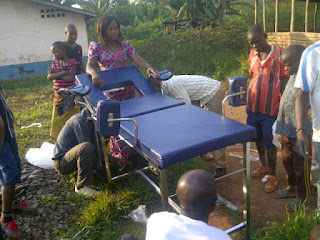 Inequality is a major
challenge to development in Africa. It takes many different forms, including
income inequality, unequal access to and control over property and resources,
unequal access to civil and political rights, and unequal access to social,
cultural, and economic rights.
Inequality is a major
challenge to development in Africa. It takes many different forms, including
income inequality, unequal access to and control over property and resources,
unequal access to civil and political rights, and unequal access to social,
cultural, and economic rights.
In most African
societies, women and girls spend important parts of their day on time consuming
responsibilities which overburden them with work in the household.
Women and young girls are
responsible for collecting water and firewood, cooking, cleaning, taking care of
the children and the sick, producing food, and marketing. All these tasks are
considered to be low-status activities. Women who spend all their time
performing these tasks are often considered to not be working. Much of the
women’s work remains unrecognized and undervalued.
When it comes to
property, the boys in a family are considered the heirs of the property of their
father. When the girls are married, they move on to their husband's family's
home. Therefore, the women are considered second class citizens. Many women are
content to be provided for, which most often leads to poverty.
These pictures will show
you the amount of work the women in Marungu village in Uvira ,South Kivu, DR Cong,
do as the men wait at home.
Fetching
water from a far away distance.
Long and strenuous hours in preparing
food.
Community builders, in
partnership with MIFA, a local ENP partner, have a one year plan to support
these ladies to be self-sustainable. This month, some have received goats and
some have received hoes and seeds for planting. In the coming months, there will
be PiF projects such as pharmacy kiosks, which will be planted in various
location in Marungu village in Uvira, DRC.














